WOMAN ON A LEDGE AT No. 97 MACON ST (1953)
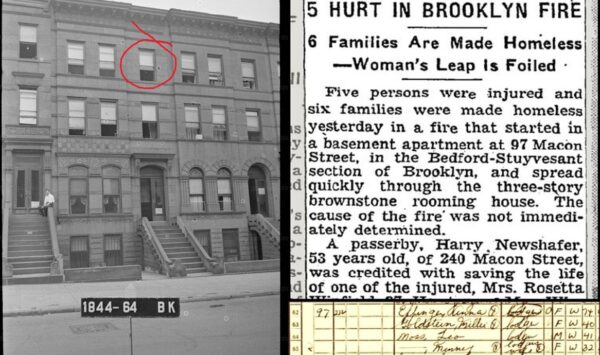
******************************************************************************************************************************** Brownstone Detectives investigates the history of our clients’ homes. The story you are about to read was composed from research conducted in the course of one of those investigations. Do you know the history of YOUR house? ******************************************************************************************************************************** All houses have a history. Those of a certain age clearly have it in spades. One part of any house’s history are those incidents that occur without planning or preordination. They can be unpleasant to know. One of those unplanned incidents, is the housefire of unknown origin that spreads uncontrollably through a residence. One such fire which spread throughout a building, took place on a cold January day in 1953 in a rooming house on Bedford-Stuyvesant’s No. 97 Macon Street. FROM A SINGLE-FAMILY TO A ROOMING HOUSE By 1953, Bedford-Stuyvesant’s brownstone stock was ageing – and it was not doing so gracefully. A large percentage of this section of Brooklyn’s brownstones had passed their semicentennial and were still wired and plumbed as they had been when they were constructed. While many of them had been maintained through the first 30-40 years, as earlier owners moved out and were acquired by owners who began to rent out rooms, however, these newer owners put little money into their maintenance, preferring to squeeze as much profit as possible out of their rent rolls. The Depression-era programs of redlining and blockbusting brought many unsavory characters into the business of making money through the purchase and management of brownstones in black-majority sections – as well as […]
No. 4 EAST 78th ST, UES: A BRIEF HISTORY
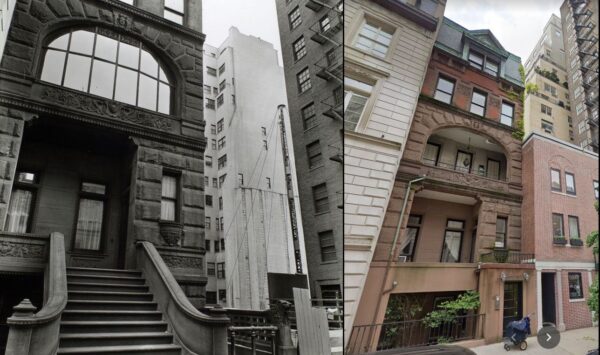
******************************************************************************************************************************** Brownstone Detectives investigates the history of our clients’ homes. The story you are about to read was composed from research conducted in the course of one of those investigations. Do you know the history of YOUR house? ******************************************************************************************************************************** According to Christopher Gray’s Streetscapes: Reader’s Questions, of the New York Times, No. 4 East 78th Street, is a Queen Anne-style house “built in 188 by the developer-architect Edward Kilpatrick. Upon completion, Kilpatrick sold it to the family of Arnold Falk, then living in a rowhouse at 129 East 64th. Mr. Falk was in the tobacco business on Water Street with his brother, Gustav, who lived in an adjacent house, 131 East 64th. On East 78th, Mr. Falk lived with his wife, Fannie, their two children and four servants. In the 1910’s and the 1920’s the house was occupied by the family of Jacob Dreicer, a principal in the Dreicer & Company jewelry firm founded in 1869, which was prominent in this period. There are now seven apartments in the building.” (New York Times, Sunday, 2 June 1991) Follow @BrownstoneDetec Share ———————————————————————————————————————– The Brownstone Detectives Brownstone Detectives is an historic property research agency. Our mission is to document and save the histories of our clients’ homes. From our research, we produce our celebrated House History Books and House History Reports. Contact us today to begin discovering the history of your home.
HAS YOUR BROWNSTONE BEEN BURGLED? (1881)
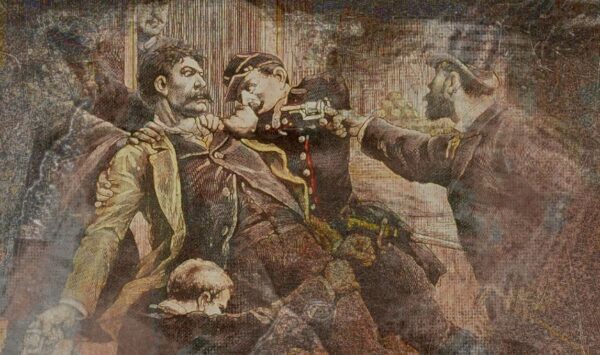
******************************************************************************************************************************** Brownstone Detectives investigates the history of our clients’ homes. The story you are about to read was composed from research conducted in the course of one of those investigations. Do you know the history of YOUR house? ******************************************************************************************************************************** New York City brownstones are veritable repositories of History. For many owners of these august “brownstone-fronts,” their homes are undoubtedly amongst the quintessential vessels within which their collective past has accrued – and has infrequently been recorded (if recalled). Ironically, it is the relatively transient nature of our brownstones’ owners (the median period of ownership of a brownstone is 15 years) that causes this history to become scattered to the ages – as one family moves out and a new family takes title to the home. Thus, with each changing of the guards, a fresh new forward-looking history begins. The “disappearance” of this history, however, serves to shackle any lineage of owners that exists, causing a sort of historical amnesia that allows your home to compare meanly with similar others in your neighborhood (esp. when placing a value on your home – or putting it up for sale). SAVING YOUR BROWNSTONE’S CRIMINAL HISTORY? Most burglaries throughout New York City history, we can be certain, have gone unreported. While most of those that do reach the attention of the police, never make it in into the papers, there are a goodly percentage of burglaries, however, that were not only reported to the police but received vivid and colorful coverage – unwanted as […]
THE ANATOMY OF A RACE RIOT (1862)
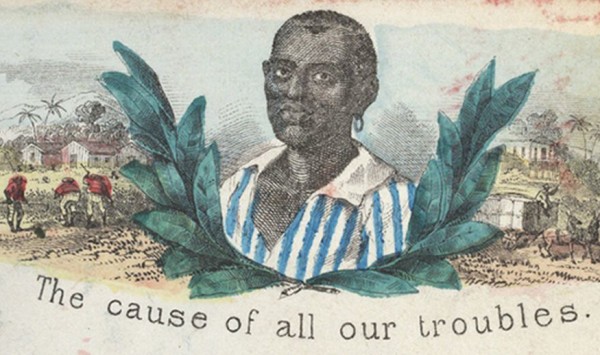
******************************************************************************************************************************** Brownstone Detectives investigates the history of its clients’ homes. The story you are about to read was composed from research conducted in the course of one of those investigations. ******************************************************************************************************************************** “Yesterday afternoon, one of the most disgraceful riots, which has ever happened in this city, took place…” So began the Brooklyn Daily Eagle‘s lead article about an “anti-Negro” riot that had taken place the previous day in the Red Hook section of Brooklyn. “…which, but for the timely appearance of the police, aided by some citizens, might have resulted in a most fearful tragedy.” HOW THE RIOT STARTED Days before the riot, though, “two (black) men who work in the rozin factory at the foot of Sedgewick Street were returning home from their work and stopped at Grady’s liquor store, in the neighborhood of the factories, to take a drink.” When a white man went to enter the establishment, he asked the “colored men” to move out of the way. When they refused, the spark that would light the kindling appeared. Of course, resentments and ill feelings had been brewing for some time, and this event, apparently, provided the “justification” for the backlash that was to come. After this minor liquor store incident – all through the night and into the next morning – various sorts of wild stories began to circulate and rumors to spread, including, unsurprisingly, unfounded accounts about “struck at the negroes with their clubs.”.” Then, when the morning arrived upon which the riot was incited, […]
WHEN MAY DAY WAS MOVING DAY (1847)
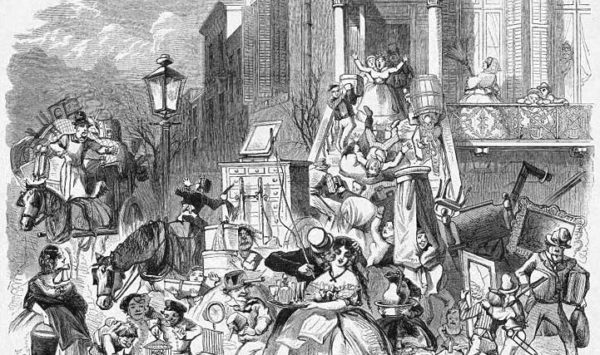
******************************************************************************************************************************** Brownstone Detectives investigates the history of our clients’ homes. The story you are about to read was composed from research conducted in the course of one of those investigations. Do you know the history of YOUR house? ******************************************************************************************************************************** Imagine, as a New York renter, waiting with dread every year for May 1 to arrive. It meant that you, like many untold thousands of other renters in the city, had to move. Now, consider the competition for hiring moving vans and movers – and the surge pricing associated with every aspect of it. This was exactly what took place in New York City on the first day of May starting in the early 19th century and lasting for about 120 years through WWII. While the annual event may have originated as a custom, the tradition was actually couched in law in 1820 when an act of the New York State legislature was passed into law, mandating that all housing contracts were valid unto the first of May (unless the day fell on a Sunday, in which case the deadline was May 2). In other words, the landlord basically had his tenants by the law. And it rarely ended well for the tenants. According to the New York Times, February 1, sometimes known as “Rent Day,” brought landlords togive notice to their tenants what the new rent would be after the end of the quarter, and the tenants would spend good-weather days in the early spring searching for new houses and […]
BROOKLYN’S FIRST GENTRIFIER (1814)
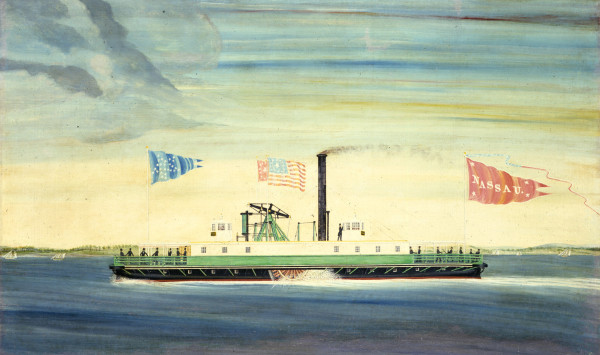
******************************************************************************************************************************** Brownstone Detectives investigates the history of our clients’ homes. The story you are about to read was composed from research conducted in the course of one of those investigations. Do you know the history of YOUR house? ******************************************************************************************************************************** It was the evolution and availability of transportation which initiated this whole Brooklyn gentrification hubub. But it started earlier than most people realize – in 1814. HOW A FERRY RIDE HELPED MAKE BROOKLYN THE ORIGINAL SUBURB A 2014 New York Times article laid out the story of how Manhattanites began their adventures in outer borough living – specifically, Brooklyn – when they started looking for cheaper digs and some lebensraum, or “elbow room,” in 1814. Regular ferry service, from Manhattan to Fulton Street in Brooklyn, started in that year when the twin-hulled Nassau, of the Fulton and South Ferry Company, carried “549 passengers, one wagon and three horses” to the borough. AMERICA’S FIRST COMMUTER Was Brooklyn where it all began? The New York Times article noted that the first man to board that ferry on 10 May of 1814 could “justly be called America’s first commuter.” Whether this claim is justifiable or not, another claim might be “justly” made: The ferry service which began on that day could arguably have kick-started the birth of gentrification. Throughout the century, as workers on Manhattan sought and found affordable housing in Brooklyn, farmers were pushed from the land. Like many selling their brownstones in Brooklyn today, though, they made tidy profits in the exchange, […]
HAPPY BIRTHDAY, NEW YORK, NEW YORK! (1985)

******************************************************************************************************************************** Brownstone Detectives investigates the history of our clients’ homes. The story you are about to read was composed from research conducted in the course of one of those investigations. Do you know the history of YOUR house? ******************************************************************************************************************************** Start spreading the news! Exactly 35 years ago today (7 February 1985), Frank Sinatra’s “New York, New York” became the official anthem of “the city that never sleeps”! According to the New York Times (the official record of New York City) it was Mayor Ed Koch who proclaimed (but not through an official “proclamation”) the tune to be New York City’s official song. In a 22 February 2017 article, the Times wrote: Today the song is often paired with last call at a tavern, or the final strikeout of a Yankees game, and when it was belted out by Sinatra in 1978 at Radio City Music Hall, it instantly resonated with audiences, said James Kaplan, author of “Sinatra: The Chairman.” “Sinatra alchemized the bombast, the recalcitrant, yes, even boastful, up-all-night spirit of the city itself,” Mr. Kaplan said. While Ol’ Blue Eyes made it an anthem, it wasn’t always Frank’s tune. Written by the songwriting team of John Kander and Fred Ebb (the men behind the musicals “Cabaret” and “Chicago”), the song was first performed by Liza Minnelli in Martin Scorsese’s 1977 film “New York, New York.” “But when Sinatra heard it, he took an instant liking to it,” Mr. Kaplan said, “and when Sinatra performed the song, he conveyed its emotional […]
RUTH & SAM & THE BUSHWICK FIRES (1977)
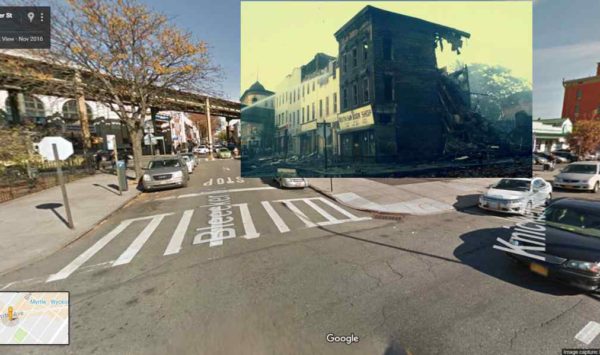
******************************************************************************************************************************** Brownstone Detectives investigates the history of our clients’ homes. The story you are about to read was composed from research conducted in the course of one of those investigations. Do you know the history of YOUR house? ******************************************************************************************************************************** In 1977, a great conflagration burned out the very heart of Bushwick. It was, at the time, one of the largest-scale fires that the Fire Department had ever fought. A 10-alarm fire, it would become “one of the largest structural fires in the city’s history,” according to the New York Times. It started suspiciously at the corner of Knickerbocker Avenue and Bleecker Street in the old Schwaben Hall, an historic German meeting hall most lately used as a knitting factory. According to the Times, the fire would rage down seven blocks of houses, destroying 23 buildings, and forcing the evacuation of more than 250 people. The destructive fire came directly on the heels of the infamous Blackout of 1977, and although the fire would smolder for days after being put out, it took about three to five hours, initially, for 55 units of firefighters from Manhattan, Queens, and Brooklyn, to get it under control. And even with this number of firefighters on the scene, it was apparent that they were working without the tools they needed to fight a fire of this intensity. Since the fire hydrants had been used by city residents throughout the summer to keep cool, they were low on water. Also, firefighters were working with an historic […]
EXHUMING THE GARDENER OF BED-STUY (1914)
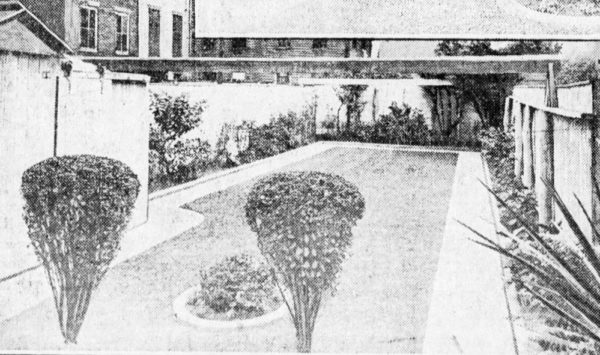
******************************************************************************************************************************** Brownstone Detectives investigates the history of our clients’ homes. The story you are about to read was composed from research conducted in the course of one of those investigations. Do you know the history of YOUR house? ******************************************************************************************************************************** “All stories, if continued far enough, end in death, and he is no true-story teller who would keep that from you.” — ERNEST HEMINGWAY, Death in the Afternoon The dead are everywhere amongst us. When we think of the past, we ponder the lives of those poor souls who once lived, breathed air, told tales, worked, and dreamed dreams. They can no longer tell tales, as the saying goes, but those resourceful ones amongst us can often piece together their forgotten stories and, with them, weave the colorful and ornate narratives of their lives. When we start researching a house and its former occupants, we never know what we’re going to find. Sometimes we unearth a truly bountiful draw – pictures of owners, documentation on the building, and the stories about what had happened at that house – they seem to start popping up all over the place. With other houses, though, it can seem as if the place had never been occupied. But we always find something. No matter how small. And these are the clues that become our figurative footprints. We’re detectives, you know. 😉 THE GARDENER OF 1155 BEDFORD AVENUE When we began snooping around 1155 Bedford Avenue, on the trail of a particular Charles Morse, we found […]